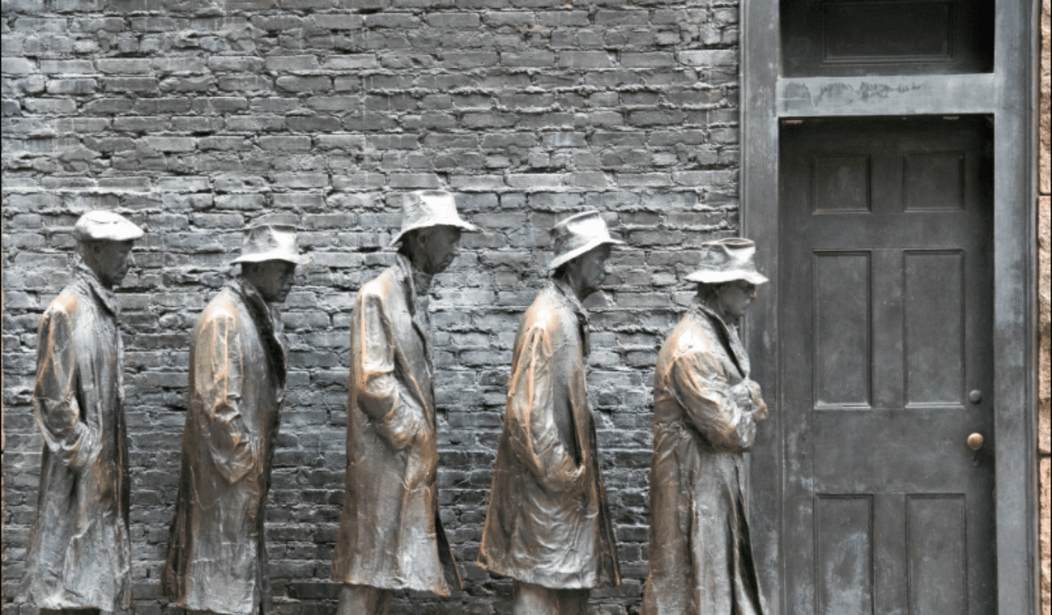WASHINGTON, D.C. — Welfare policy experts at the Heritage Foundation on Tuesday debunked the myth that 1.5 million households are living under $2 per day in modern America, explained how liberal miscalculations gave that number, and made clear how this falsehood actually harms the poorest Americans.
“The way that we conventionally count poverty is a racket. It was designed to exaggerate poverty and promote greater spending,” Robert Rector, an architect of the 1996 welfare reform law and a senior research fellow at the Heritage Foundation, told PJ Media after a panel discussion.
Rector and other welfare experts referred to the 2015 book $2.00 a Day: Living on Almost Nothing in America by Kathryn J. Edin and H. Luke Shaefer. Edin and Shaefer reach the 1.5 million families number by focusing on cash income rather than spending, and by refusing to count government assistance programs (such as Medicaid, food stamps, et cetera) as “income.”
But even just focusing on income twists the meaning of poverty, warned Bruce Meyer, professor at the University of Chicago’s Harris School of Public Policy Studies. “Low consumption is more closely associated with deprivation than low income,” Meyer explained. When it comes to quality of life, income makes less of an impact than spending — especially among the poor.
Rather than judging poverty levels by income, sociologists should focus on spending, especially on rent and food eaten at home. “People know their rent, they’re happy to report it. They’re much less comfortable reporting their income,” the professor explained.
Meyer even cited Edin’s other book, Making Ends Meet: How Single Mothers Survive Welfare and Low-Wage Work, noting that “almost all single mothers supplement their income” with informal earnings and transfers from family and friends. This money would be reported in their spending, but does not register on surveys about income.
In his remarks to PJ Media, Rector recalled how, after the food stamp program was introduced, some asked whether the government should count such assistance as income. “The bureaucracy and the left said, ‘No, we’re not counting that — it’s not income, it has no effect on poverty.’ And Irving Kristol said, ‘Well, if it has no effect on poverty, what are we doing?'”
“Clearly there was an interest in miscounting it in order to have a very high number,” he explained. This is the “racket” of welfare policy. “But that’s a two-edged sword for the left,” Rector argued: If they fudge the numbers to emphasize higher poverty rates, it leads to the question of whether the welfare state is actually reducing poverty. But if they actually reported the real living conditions of the poor, they would have to admit the problem isn’t as bad as they say.
Rector argued in favor of more accurate poverty statistics — “an account of where this money goes, and who it goes to.” He emphasized that conservatives should not repeat the canard that welfare spending doesn’t actually reach poor people, because it does. “It does not get sucked up by bureaucracy,” he argued. “We spend a lot of money and we hand out a lot of free stuff.”
“What we ought to do is have that spending but have it in a way that brings together positive energies from the recipient and welfare together, to produce a synergistic result, rather than one that allows welfare to displace work, to displace marriage, and push people into greater dependence,” he said.
Distributing welfare benefits without work incentives does improve poor people’s quality of life to some extent. It really does give economic benefits to people who do not earn an appreciable income. Poverty statistics should take these benefits into account and acknowledge that these families are not living on the equivalent of $2 per day, but rather on a great deal more than that.
But welfare programs also have negative impacts on human flourishing. By giving people unearned benefits, the government removes the healthy pride associated with earning your own living. Rector even argued that welfare programs “currently penalize low income mothers and fathers when they get married,” which discourages the stable, two-parent families that children need to flourish.
“A work- and marriage-based system would be much more efficient in reducing poverty and much more compatible with human dignity,” Rector declared. Programs like the 1996 Welfare Reform Law — which passed 20 years ago next week — could make this vision of the social safety net a reality. To do this, Americans need to approach the issue clearly, with accurate data and a willingness to solve the problems as they really are, regardless of ideology.
Welfare spending helps “the least of these” in the short term, but in order to really flourish, the poor need assistance that encourages them to reenter the workforce and form stable families for their children. Such a system wouldn’t just help the poor, it would also help them stop being poor.









Join the conversation as a VIP Member